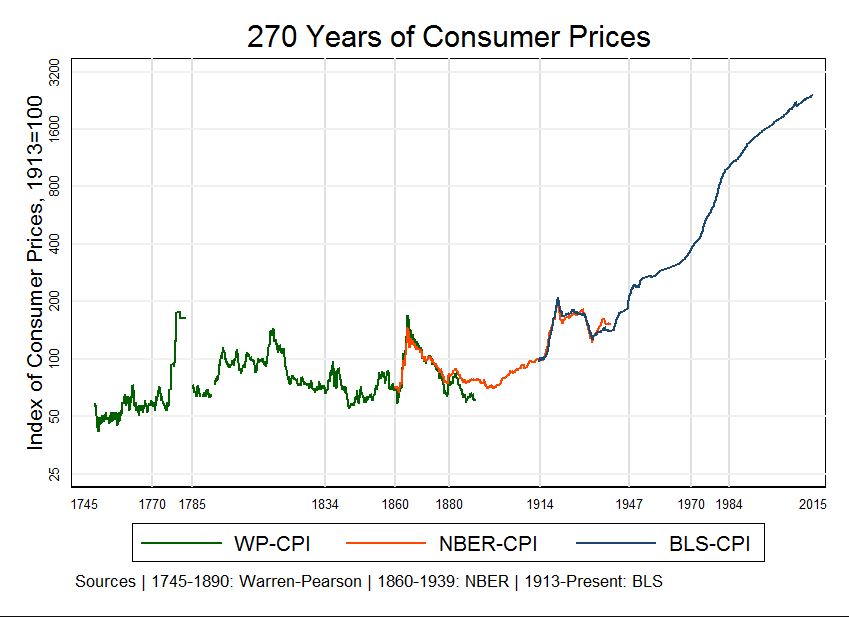2030: The End of Fiat Currencies?
Is the end of fiat nigh?

Share this article
Deutsche Bank has released a report arguing that the next decade could usher in the end of fiat currencies. Could their analysts be right? And what part does cryptocurrency have to play in that?
Did Fiat Money Create Inflation?
Imagine 2030, a special edition of Konzept, released by the research team at German banking giant Deutsche Bank, suggests that certain factors that have held the fiat money system together since the 1970s are beginning to weaken.
With the collapse of the gold-based Bretton Woods global monetary system in the early 1970s, national currencies became de-linked from precious commodities like gold.
It’s replacement, fiat money, was based on little more than trust in the government’s ability to maintain its value. The independence of fiat money from any inherent backing, however, introduced the problem of inflation.
Governments became free to print as much or as little money as they wanted in response to perceived economic needs. Society has become so attuned to the notion that prices always rise, that it is easy to forget that, save for rare events of upheaval, inflation did not significantly exist prior to fiat being freed from its commodity backing.
The chart below demonstrates a substantial spike in consumer prices from 1970 to the mid-80s:

Deutsche Bank suggests that the fifty-year fiat system that introduced inflation, and which took a financial meltdown to contain, has been held in check not by governments but by “a fortuitous set of global forces across multiple decades that have created sizeable natural offsetting disinflationary forces.”
The analysts suggest those forces are now under threat.
Have Central Bankers Baked Their Irrelevance into the Future?
In the latest, central banks are pursuing yet another round of interest rate cuts and quantitative easing programs that have been in place since the global financial crisis.
Inflation has not been a threat for over a decade, and remains under its two percent target levels in the US and Europe:
Lagarde: We expect ECB interest rates to remain at their present or lower levels until we have seen the inflation outlook robustly converge to a level sufficiently close to, but below, 2% within our projection horizon … (1/2)
— European Central Bank (@ecb) December 12, 2019
Given low inflation risks and sluggish economic growth, central bankers worldwide are doing what they can to stimulate growth by making money cheap. But after a decade of failure to stimulate projected growth levels, is their arsenal ill-equipped for the job in an increasingly interconnected world?
Deutsche Bank argues that globalization, deregulation, and demographic shifts since the 1980s have had more to do with keeping inflation in check than central banks. Citing China’s integration into the global marketplace, economies worldwide have benefited from a range of downward forces on prices: a surging labor force, the export of deflation through low production costs from the emerging world to the developed world, and labor’s declining share of GDP.
China’s capacity to produce goods cheaply has caused a stagnation in wages in the developed world. That has meant keeping inflation at bay has been easy. With demographics pointing to smaller working age populations over the next few decades, however, labor costs look set to rise.
Given the increasingly popular belief that monetary policy is losing its effectiveness for the working class and the growing threat of nationalism, governments may need to focus on lower income workers who feel globalization has left them behind. To do so, they may become forced to use fiscal, rather than monetary measures, to address economic concerns.
Without China and other industrializing nations continuing to place downward pressure on labor costs to offset the inflationary byproduct of fiscal stimulus, monetary debasement could re-emerge as a threat to economic stability.
The Beginning of the End of Fiat?
The World Bank recently issued a warning about unsustainable global debt levels.
Describing four waves of debt-fueled growth over the last fifty years, the group says the most recent, which began in 2010 in emerging and developing economies, “has already witnessed the largest, fastest and most broad-based increase in debt… total debt has risen by 54 percentage points of GDP to a historic peak of almost 170 percent of GDP in 2018.”
Total US debt sits at around 2,000% percent of GDP, according to some analysts. The Wall Street Journal measures the increase in global debt among governments, businesses, and households at 50 percent since the GFC.
Those debt levels mean central banks are reluctant to allow interest rates to creep up too high to offset the inflationary genie that fiscal stimuli would let out of the bottle.
With an entire global economy and its workforce facing a stark choice between runaway inflation or crippling interest rates and recession, a loss of faith in the fiat currency system could emerge.
Imagine a 2030 World without Fiat Money
If things play out as Deutsche Bank suggests they may, the trust in governments that underpins the non-pegged fiat system could be breached.
Cryptocurrency would stand to benefit from the end of fiat as more and more people seek a way to escape the unavoidable monetary debasement that inflation would cause and to preserve their wealth.
Many have also argued that aggressive monetary policy has benefited the rich at the expense of the poor. Its impact has been soaring property and stock prices, while everyday prices and real wage growth have been stagnant.
The perilous position the global economy now faces could mean a leveling out of the playing field and a chance to start afresh, with a new system that places trust in code, rather than politicians.
The end of fiat could be nigh, and demand for cryptocurrencies could surge as a result.
Share this article
